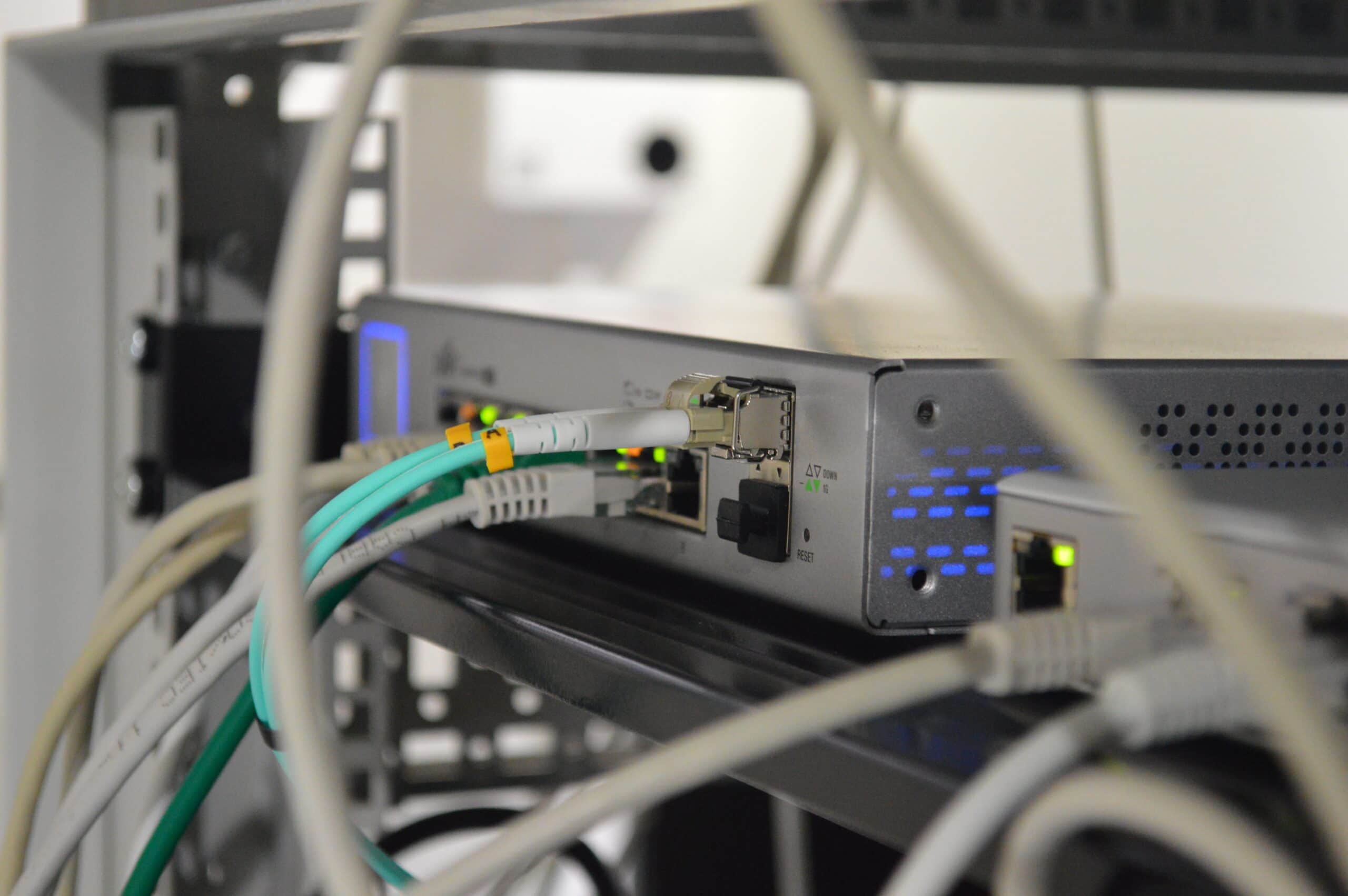Introduction: How to Secure a Network
Securing your network is a necessity in today’s digital landscape. At K3 Technology, we recognize the importance of fortifying your network against evolving cyber threats. As businesses increasingly rely on interconnected systems, ensuring the integrity and security of your network becomes non-negotiable.
In this guide, we’ll explore common network threats and vulnerabilities as well as network security strategies and measures. K3 Technology is here to break down the essential security measures including, but not limited to, the following: (1) firewalls and intrusion detection systems, (2) endpoint security solutions, (3) encryption for data protection, (4) employee training and awareness, (5) software updates and patches, and (6) network access control.
At K3 Technology, our goal is to empower you with the knowledge and tools needed to safeguard your digital assets.

Network Threats and Vulnerabilities
Before delving into how to secure a network, we turn to common network security challenges.
Phishing Attacks: One prevalent threat is phishing, where malicious actors attempt to trick users into divulging sensitive information. Our robust security protocols include user education and advanced email filtering to counteract these deceptive tactics.
Malware and Ransomware: Malicious software, including ransomware, poses a significant risk if it infiltrates computer systems. These cyber threats encrypt valuable data, demanding a ransom for its release, or compromise system integrity, jeopardizing information security. K3 deploys cutting-edge antivirus solutions and conducts regular system scans.
Unsecured Wi-Fi Networks: Open or poorly secured Wi-Fi networks provide an entry point for attackers. K3 ensures the implementation of robust encryption and secure Wi-Fi configurations to thwart unauthorized access and data interception.
As part of K3’s commitment to securing networks, we stay vigilant against these threats. By identifying and addressing vulnerabilities promptly, we ensure that your network remains resilient against evolving cyber risks.

How to Secure a Network: Different Strategies
No need to worry about how to secure a network with K3 Technology by your side — we’ll handle it all! We implement a comprehensive strategy, starting with robust firewalls and intrusion detection systems. Our focus extends to endpoint security, encryption for data protection, and proactive network monitoring. Regular security audits and advanced threat detection further fortify your defense against evolving cyber threats.
At K3, we’re committed to ensuring the utmost security for your digital assets, using cutting-edge methods to keep your network resilient and protected.

How to Secure a Network: Proactive Monitoring
One of the most important strategies to remember when learning how to secure a network is proactive monitoring. At K3 Technology, proactive monitoring stands as a cornerstone of K3 Technology’s approach. Rather than merely reacting to potential threats, we adopt a vigilant stance, constantly observing network activities to identify anomalies promptly.
This real-time monitoring allows us to detect and respond to any irregularities, ensuring the immediate mitigation of potential risks. Through sophisticated tools and a dedicated team, K3 employs continuous surveillance, keeping a watchful eye on network performance, user activities, and potential security breaches.

How to Secure a Network: Threat Detection and Prevention
K3 Technology goes beyond conventional security measures, implementing advanced threat detection and prevention strategies. We leverage cutting-edge technologies and techniques to identify and neutralize potential threats before they infiltrate your network.
Our approach involves heuristic analysis, anomaly detection, and behavior analytics. These strategies allow us to discern patterns indicative of malicious activities. By deploying sophisticated intrusion detection systems and leveraging threat intelligence, we stay one step ahead, ensuring your network remains secure.
Moreover, through continuous updates and adjustments, we adapt to the evolving threat landscape. K3’s commitment to advanced threat detection and prevention reflects our dedication to keeping your network secure, resilient, and capable of withstanding the intricacies of modern cybersecurity challenges.

How to Secure a Network: Audits and Assessments
Regular security audits and assessments are integral to K3 Technology’s comprehensive strategy for securing networks. In the ever-evolving landscape of cyber threats, periodic evaluations are essential to identify vulnerabilities, assess security protocols, and ensure ongoing compliance with industry standards.
K3 employs a systematic approach, conducting thorough audits that scrutinize every aspect of your network infrastructure. Our audits go beyond routine checks; they involve in-depth analyses of network configurations, access controls, and data handling processes. This meticulous examination enables us to detect potential weaknesses and address them proactively.
By embracing a proactive stance through regular security assessments, K3 ensures that your network remains resilient against emerging threats. These assessments also serve as a valuable tool for continuous improvement. Partner with K3 for a secure network environment that is fortified through systematic evaluations and proactive security measures.

How to Secure a Network: Firewalls and Intrusion Detection Systems
K3 Technology employs a robust defense through the strategic deployment of firewalls and intrusion detection systems (IDS). Firewalls act as the first line of defense, monitoring and controlling incoming and outgoing network traffic based on predetermined security rules. At K3, we implement firewalls tailored to your network’s unique requirements, creating a protective barrier against unauthorized access and potential cyber threats.
Complementing firewalls, intrusion detection systems play a crucial role in identifying and responding to suspicious activities within the network. K3’s IDS monitors network or system activities, analyzing patterns that deviate from normal behavior. In the event of a potential intrusion, the system triggers alerts, allowing our experts to investigate and take immediate action.
Choose K3 Technology for a network security strategy that prioritizes prevention, detection, and immediate response to potential threats.

How to Secure a Network: Endpoint Security
Endpoint security solutions play a pivotal role in K3 Technology’s comprehensive approach to securing networks. Endpoints, which include devices like computers, smartphones, and servers, are common targets for cyber threats.
Our endpoint security solutions encompass robust antivirus programs, anti-malware tools, and advanced threat detection mechanisms. These components work in tandem to safeguard individual devices from malicious software and potential security breaches. K3 prioritizes the deployment of these solutions across all endpoints within your network, creating a unified and resilient security posture.
Moreover, our approach extends beyond traditional antivirus measures. K3 incorporates behavior-based analysis and real-time monitoring to detect and respond swiftly to emerging threats. By focusing on endpoint security, we ensure that every device accessing your network is fortified against potential risks, contributing to the overall resilience of your digital infrastructure.
At K3, we understand that securing your network is only as strong as the security of its individual components.

How to Secure a Network: Encryption for Data Protection
In the digital age, where information is a valuable asset, encrypting data becomes paramount. Encryption involves encoding information in a way that only authorized parties can access it, rendering intercepted data useless to potential intruders.
At K3, we implement robust encryption protocols across your network, ensuring that data remains confidential and integral during transmission and storage. Our approach includes utilizing advanced encryption algorithms and key management systems to safeguard information at every touchpoint.
Whether it’s sensitive client information, financial data, or internal communications, K3 prioritizes the adoption of encryption to prevent unauthorized access and potential data breaches. By encrypting data, we add an additional layer of protection, making it challenging for cyber adversaries to compromise the integrity of your network.

How to Secure a Network: The Human Component
At K3 Technology, we recognize the crucial role employees play in network security. To fortify your defense against cyber threats, we prioritize comprehensive training programs. Here’s how we empower your team:
- Strong Password Policies: Educating employees on creating and maintaining robust passwords.
- Phishing Awareness: Training to identify and avoid phishing attempts, safeguarding against malicious emails.
- Device Security: Guidelines for securing personal devices to prevent unauthorized access.
- Safe Browsing Habits: Promoting cautious online behavior to mitigate the risk of malware.
Our training ensures your workforce becomes an active line of defense, contributing to a more secure network environment. At K3, we believe knowledge is a powerful shield against cyber threats.

Securing Wireless Networks
Securing wireless networks is a crucial aspect of overall network security. K3 Technology recommends the following measures:
- Implement Strong Encryption: Use WPA3 encryption to protect data during transmission.
- Change Default Credentials: Modify default usernames and passwords to prevent unauthorized access.
- Enable Network Segmentation: Divide the network into segments to limit access to sensitive areas.
- Regularly Update Firmware: Keep router firmware up-to-date to patch vulnerabilities.
- Use Strong Authentication: Implement robust authentication methods like WPA3-Enterprise.
- Disable Unnecessary Services: Turn off unnecessary features to reduce potential attack surfaces.
- Monitor Network Traffic: Regularly check for unusual or suspicious activities on the wireless network.
These practices enhance the security of wireless networks, fortifying your digital infrastructure against potential threats.
Frequently Asked Questions
RELATED TO: “How to Secure a Network”
How often should I update my network security software?
Regular updates are essential. Ensure all software, antivirus programs, and security solutions are updated promptly to patch vulnerabilities and stay resilient against emerging threats.
Can I implement network security measures for remote workers?
Absolutely. K3 provides solutions for securing remote work environments, including virtual private networks (VPNs), multifactor authentication, and secure communication channels to ensure the security of remote connections.
How does K3 Technology ensure the confidentiality of my sensitive data?
K3 employs encryption protocols to secure sensitive data during transmission and storage. Our comprehensive approach includes robust encryption algorithms and key management systems to safeguard your information.
How can I stay informed about the latest cybersecurity trends and best practices?
K3 Technology offers ongoing training sessions and resources to keep you informed about the latest cybersecurity trends and best practices. Stay connected with us to enhance your knowledge and stay ahead of potential threats.
Conclusion: How to Secure a Network
All in all, safeguarding your network is essential with the number of evolving cyber threats. K3 Technology emphasizes the significance of a multi-layered security approach. Partner with us to ensure your network remains resilient, protecting your sensitive information and ensuring the seamless operation of your digital infrastructure. Trust K3 Technology for comprehensive, effective, and tailored solutions to enhance your network security posture.






